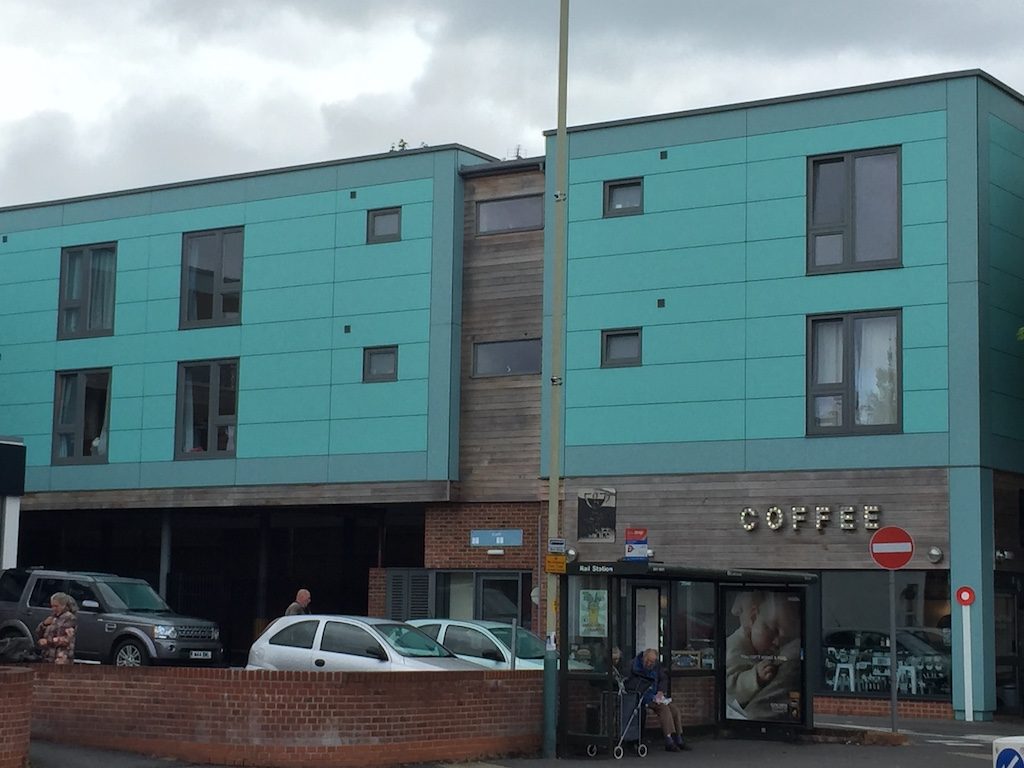Aluminium Insulated panels have become a very important material in commercial building construction. Widely used as an opaque glazing material they have several uses internally and externally. But how did aluminium panels come about?

The aluminium panel has been used for over 30 years in construction and is referred to by different terms based upon the standard or typical construction. Panels can either be referred to as Aluminium Insulated Panels, Aluminium Composite Panels, Aluminium Sandwich Panels or simply Aluminium Panels.
There are various brand names of panels that are in existence but regardless of the supplier the method of construction remains essentially the same.
What is the common construction of the standard Aluminium Panel?
When referring to standard aluminium panels the basic construction is two aluminium sheets which are bonded to an insulated core. It is this core that gives the panel its properties be they insulating, fire, or thermal. A standard panel that is simply required as an opaque glazing material may have a simple polystyrene core. If greater strength is required, this core can have an inner piece of timber or aluminium or steel to give greater rigidity. The greater the performance required from the panel, the higher the specification of the insulation can be.
Where can Aluminium panels be used?
Aluminium panels can have internal and external applications. Aside from being used commonly as a glazing material they are also used for insulation and for shop signs and other forms of signage. For windows, panels are widely used commercially where ribbon windows (long banks of windows running across the width of a building) pass the internal walls and these need to be covered so they are not seen externally.
For doors, panels can be used below door mid rails, in door sidelights and are also used in blocks of apartments that have many letterboxes serving the residents. Aluminium panels are commonly used to surround these letterboxes.
Aluminium Panels can also be used as corner detailing for example where glazing runs along two elevations and the structural corner needs cladding and covering. The versatility of the material means that corners, angles, circles and shapes are all possible. For more complex arrangements rebated, stepped, edged and other panels are possible as are panels designed to cover columns.
The Aluminium External and internal faces.
With aluminium being so common in insulated panels, this brings many advantages. Virtually limitless colour choices are available which make aluminium panels very popular where architects wish to create dramatic effects in buildings using a variety of colours. It is the powder coating process of aluminium panels that makes this possible. Panels can be powder coated in any of the colours available from RAL, Syntha Pulvin or BS colours. Typically the thickness of the aluminium used in panels ranges from 0.6mm thick up to 3mm thick.
The same types of guarantees that are found in powder coated windows and doors are also available for aluminium panels. This means that panels used with windows and doors installed in extreme, coastal, chlorine or other severe environments can also have the same extended paint guarantees found in the windows.
The panel insulation.
The insulation used in aluminium panels can achieve differing U values, but typically these can exceed the building regulations U Value Requirements substantially. Where higher performance insulated cores are required these can consist of Styrofoam polystyrene, polyurethane, mineral fibre, wood, polyisocyanurate and others.
Typical Sizes and Other Specifications
Aluminium panels are generally governed by the sheet sizes possible in aluminium. Typically the maximum sheet sizes available are 2000x3000mm although some special sheets can be manufactured at 4000mm in length. The thickness of the panels ranges depending on the glazing materials but anything from 10mm up to 300mm for specialist applications is possible. Where used as a glazing material aluminium panels will be manufactured at the same thickness as the glass units.
The Superior Insulated Panel.
At Superior Insulated Panels, we provide the window and construction trades with high quality aluminium panels that are manufactured using the latest technology and highest quality production methods. The painting of our panels is carried out in our own in house powder coating plant. This gives us the flexibility to offer cheaper prices, faster lead times and also work with you in coating your window material at the same time as your panel material.
The latest bonding techniques and highest quality adhesives are used to ensure our panels not only look good but give the maximum service life. So whether you are looking for aluminium panels for internal or external applications contact us with your requirements. All our processes are Quality Assured as well.
